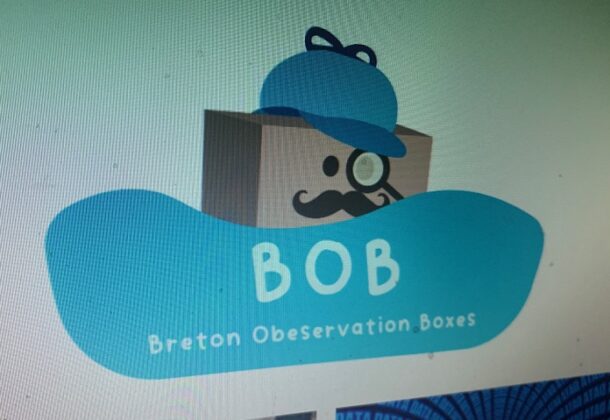Forrest Center Students Develop Water Monitoring Kits

In response to the need for cheaper and more widespread water quality monitoring in the Chesapeake Bay, teachers, and students at the Dr. James A. Forrest Career and Technology Center in Leonardtown are partnering with community volunteers to create inexpensive remote monitoring kits funded by a grant from the Chesapeake Bay Trust.
“This project has the potential to change the way people relate to and care for the Bay,” natural resources management teacher Dorothy Birch said. “Knowing more about the surface water around us and the pollution challenges we face to keep our water clean will encourage people to get more active in protecting our waters.”
The kits, designed and assembled by volunteer Norm O’Foran with help from the school’s engineering teacher and students, use microprocessor technology and cost about $800 each while comparable equipment sells for upward of $20,000. They measure air temperature and humidity, water temperature at surface and bottom, dissolved oxygen, pH, electrical conductivity, total dissolved solids, and salinity.
Dubbed by students as Breton Observation Boxes (BOBs), several of the kits were placed in the Breton Bay watershed during student field trips in May.
“I hope to see BOBs on docks around the world someday,” Ms. Birch said.
The BOBs are recording live data every 10 minutes, which can be viewed here.
The project began when Norm O’Foran and his wife, Shelly, moved to St. Mary’s County a few years ago and began exploring ways to contribute to the health of the Bay. A horticulturist by training, Norm initially studied the lack of submerged aquatic vegetation, but soon noticed a need for more detailed water quality monitoring that did not require boating and hand sampling. Using Internet of Things (IOT) makerspace microprocessors, he began developing an inexpensive solution.
As the project grew, the couple realized the educational potential. A retired Loudoun County, VA, teacher, Shelly envisioned a project-based, authentic learning curriculum for high school students that both would raise their awareness and would allow them to educate the public on water quality.
Ms. Birch partnered with the couple to apply for and receive a $5,000 Youth Environmental Education Grant from the Chesapeake Bay Trust for the 2022-2023 school year. The money pays for the supplies to build the BOB kits.
“The purpose of this project is not only to make water quality testing easier and the data more accessible, but also to help spread awareness of the Chesapeake Bay’s condition and why we need to ensure its health for its inhabitants,” said student Grace Anderson.
Ms. Birch’s NRM students have led the project, but they have received help from teenagers in Engineering, Graphic Communications, and the Teacher Academy in lessons such as: using microprocessors in prototyping, soldering solar panels, branding and marketing the kits, and designing project-based learning lessons for other Environmental Science teachers.
“To me, the best thing about this project was how interconnected the involvement was within the Tech Center,” said student Lola Gaytan. “Multiple classes worked together to create the best possible results. When we were confused, there were people there to guide us and to lean on when it otherwise could have felt very overwhelming.”
Within the natural resources class, students have studied all aspects of water quality, assisted in instrument calibration, troubleshooted the loss of an early BOB prototype, placed the kits at the Chesapeake Biological Laboratory at Solomons Island for data analysis and later moved them into the watershed, monitored and analyzed data, made a presentation at a Leonardtown commissioners’ meeting, designed the website, and written and distributed marketing materials.
Students also learned many soft skills such as collaboration and teamwork. “I’ve learned to have more patience with the long process of this whole project, and I’ve learned how to get things done in a professional manner to serve the community,” noted student Jasper Dichter.
Ms. Birch agreed.
“The best part of this project has been watching the students really get into problem solving, seeing their ownership of local waters increase dramatically,” she said.
In comparing BOBs’ data to that collected by professional instrumentation on the Chesapeake Biological Laboratory pier, Norm O’Foran noted, “Our data is not currently all that accurate. Improving those numbers is our goal for next year. But if it was so easy that you could just build an $800 kit, plop it in the water, and receive data comparable to CBL’s $40,000 solution, then it would have been done before.”























